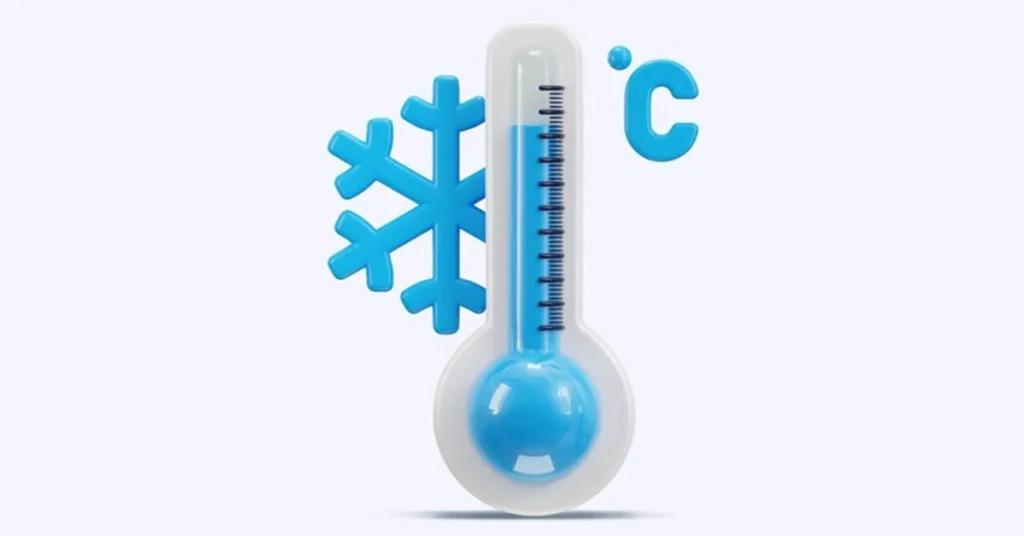Temperature conversion is an essential skill for anyone working with global measurements. Whether you’re a student, a traveler, or someone working in science or engineering, understanding how to convert temperatures from Fahrenheit (°F) to Celsius (°C) and vice versa can help you interpret data, understand weather forecasts, or even plan for your next vacation. In this article, we will explain the conversion of 17 F To C, as well as provide a simple, clear guide to understanding temperature conversion.
ALSO READ: Bolder Adventure Park: Your Ultimate Outdoor Thrill Destination
Understanding Fahrenheit and Celsius
Before diving into the specific conversion of 17 F To C, it’s important to understand the two temperature scales: Fahrenheit and Celsius.
Fahrenheit (°F) is primarily used in the United States and its territories, and it measures temperature based on the freezing point of water (32°F) and the boiling point of water (212°F) under normal atmospheric pressure.
Celsius (°C), also known as centigrade, is used by most countries around the world and is based on the freezing point of water (0°C) and the boiling point of water (100°C).
The two systems are based on different starting points and intervals, which is why converting between them requires a mathematical formula.
The Fahrenheit to Celsius Conversion Formula
To convert Fahrenheit to Celsius, you can use this straightforward formula:°C=(°F−32)×59°C = \frac{(°F – 32) \times 5}{9}°C=9(°F−32)×5
Step-by-Step Conversion of 17 F To C Celsius
Now that we know the formula, let’s convert 17°F to Celsius.
Subtract 32 from the Fahrenheit temperature:
17°F−32=−1517°F – 32 = -1517°F−32=−15
Multiply by 5:
−15×5=−75-15 \times 5 = -75−15×5=−75
Divide by 9:
−75÷9≈−8.33-75 \div 9 \approx -8.33−75÷9≈−8.33
Thus, 17°F is approximately -8.33°C.
Why Do We Convert Between Fahrenheit and Celsius?
The primary reason for converting between Fahrenheit and Celsius is that different countries and industries use these two different temperature scales. For example, the United States typically uses Fahrenheit for everyday temperature measurements (like weather forecasts), while most of the rest of the world uses Celsius. In science, the Celsius scale is often preferred because it is based on the properties of water, making it a more universal measurement for scientific experiments and weather predictions.
Additionally, in international trade and travel, understanding both systems helps avoid confusion. Temperature conversions are also vital for cooking (where recipes might use either scale) or in the fields of medicine, engineering, and aviation.
Tips for Easy Temperature Conversion
If you’re not a fan of memorizing formulas, there are other ways to help with conversions.
Use Online Converters
There are numerous online tools and smartphone apps that offer automatic conversions between Fahrenheit and Celsius. These can be especially handy if you’re on the go and need quick conversions. Simply input the Fahrenheit value (like 17°F), and the app or website will instantly convert it to Celsius (in this case, -8.33°C).
Approximate Conversions
If you want a rough estimate and don’t need extreme precision, you can use this approximation formula:°C≈(°F−30)÷2°C \approx (°F – 30) ÷ 2°C≈(°F−30)÷2
For example, for 17°F:(17−30)÷2=−13÷2≈−6.5°C(17 – 30) ÷ 2 = -13 ÷ 2 \approx -6.5°C(17−30)÷2=−13÷2≈−6.5°C
This isn’t as precise as the exact calculation, but it’s often good enough for casual use.
Memorizing Key Temperature Points
If you find yourself frequently converting between the two systems, memorizing key reference points can help speed up the process. Here are some common temperatures and their equivalents in both Fahrenheit and Celsius:
- 32°F = 0°C (freezing point of water)
- 212°F = 100°C (boiling point of water)
- 98.6°F = 37°C (average human body temperature)
Once you know these benchmark temperatures, you can better estimate where other temperatures fall.
Practical Uses for Temperature Conversions
Knowing how to convert temperatures can be extremely useful in a variety of real-world scenarios:
Weather Forecasting
When traveling or planning activities, it’s important to understand the weather. Weather reports across the world often use Celsius, while U.S. weather stations use Fahrenheit. For example, you may find out that it’s 17°F outside and need to convert it to Celsius for better understanding of how cold it is.
Cooking and Recipes
Some recipes use Fahrenheit, while others use Celsius. If you’re following an online recipe or a cookbook from a different country, it’s essential to know how to convert the temperature of your oven or cooking instructions.
Health and Medicine
In medicine, fever measurements and the body temperature of patients are often given in Celsius in many countries, but in some places, Fahrenheit is still used. Being able to convert these temperatures is essential for healthcare professionals and even patients.
Science and Engineering
Celsius is often preferred in scientific research due to its alignment with the metric system. Scientists and engineers frequently need to convert temperatures when working with global data, measurements, or experiments.
International Travel
When traveling abroad, you may encounter temperature measurements in Celsius. Whether you’re checking the weather forecast or gauging the temperature of water in a pool, converting Fahrenheit to Celsius will help you understand your surroundings better.
Conclusion
Converting temperatures from Fahrenheit to Celsius is simple once you understand the formula. In this case, 17 F To C is approximately -8.33°C. Whether you’re dealing with daily weather, cooking, or science, understanding both Fahrenheit and Celsius can be incredibly helpful. You can use tools like online converters for quick conversions, or memorize key temperatures for faster mental calculations. With practice, converting temperatures will become second nature, making it easier to navigate different temperature scales in your everyday life.
ALSO READ: Maximize Your Trades With ECrypto1.Com Crypto Exchange
FAQs
What is 17 F To C in Celsius?
17 F To C is approximately -8.33°C when converted using the formula (°F−32)×5/9(°F – 32) × 5 / 9(°F−32)×5/9.
Why is Celsius used more widely than Fahrenheit?
Celsius is based on the natural freezing and boiling points of water (0°C and 100°C), which makes it more intuitive for scientific use. It’s also part of the metric system, which is used by most countries around the world.
What is the difference between Celsius and Fahrenheit?
Celsius and Fahrenheit are two different temperature scales. Celsius is based on the freezing and boiling points of water (0°C and 100°C), while Fahrenheit is based on different reference points, such as the freezing point of water at 32°F and the boiling point at 212°F.
How do you convert negative temperatures between Fahrenheit and Celsius?
Negative temperatures can be converted between Fahrenheit and Celsius using the same formula (°F−32)×5/9(°F – 32) × 5 / 9(°F−32)×5/9. Just remember that negative Fahrenheit values will result in negative Celsius values.
How do you estimate Celsius from Fahrenheit without a calculator?
You can use the approximation formula: (°F−30)÷2(°F – 30) ÷ 2(°F−30)÷2. This gives you a rough estimate of the Celsius value.







